Thomas Hart Benton's Works at The Nelson-Atkins Museum of Art
Introduction
Text-to-speech Audio
The Nelson-Atkins Museum of Art holds 143 works by Thomas Hart Benton, and as of May 2022, seven of these works are on public display. These pieces range from a traditional 1913 painting and a bronze bust to some of his latest and most famous artworks. These pieces represent many of Benton’s main subjects. Rural life, Black men, industry, and nudity all take center stage. Across the street from where he used to teach, visitors can view Benton’s works next to those of his contemporaries. This context highlights the experimental and traditional elements of his work. Portrait of the Artist’s Sister (Mildred) is on view in Gallery 217. Six other pieces are in Gallery 220: Hollywood, Crapshooters, Persephone, Persephone (study), The Benton Farm, and Bust of Rita.
Images
Hollywood (1937-38)
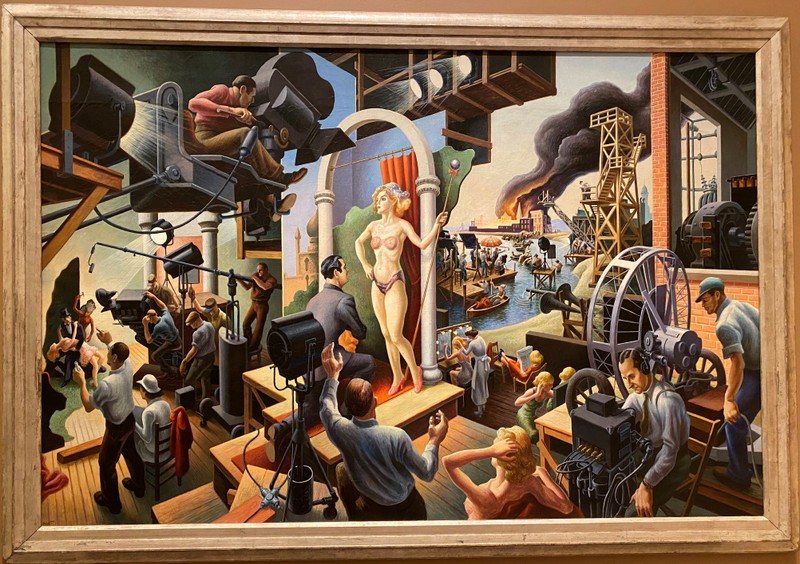
Crapshooters (c. 1928)
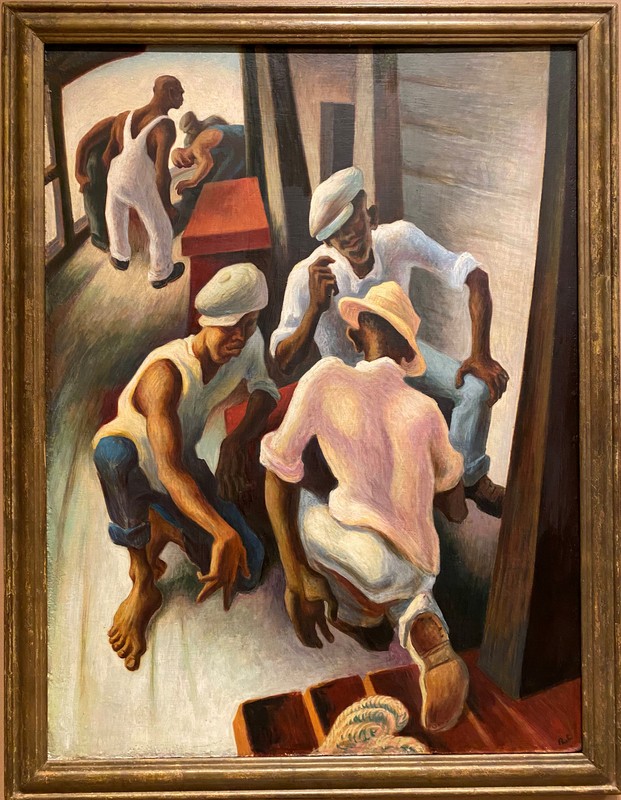
Persephone (1938-39)

Persephone (study) (1938)
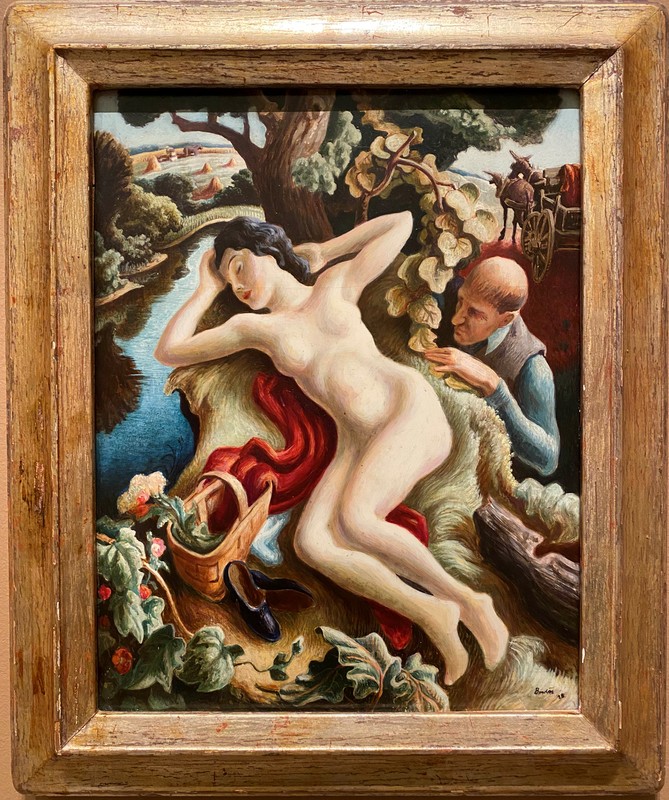
The Benton Farm (1973)
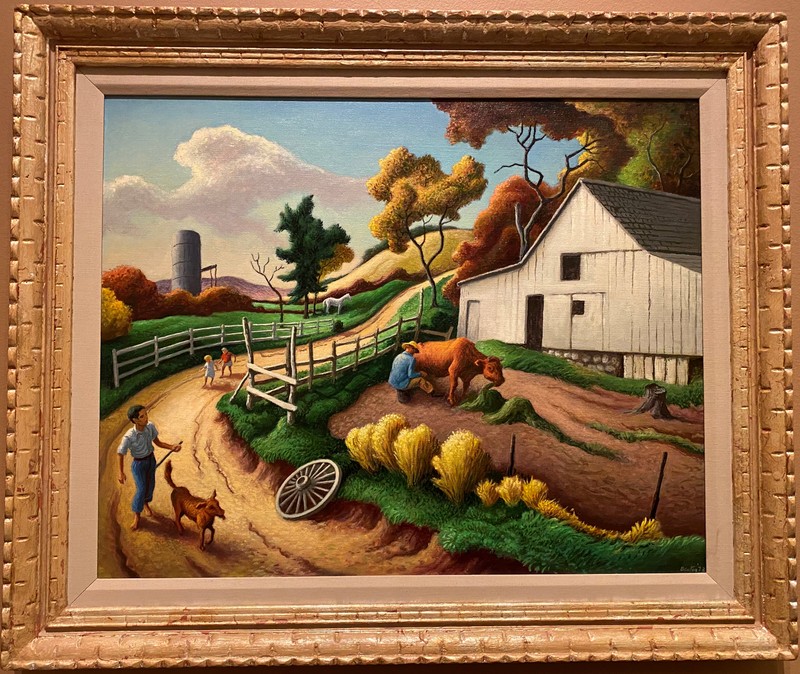
Bust of Rita (Modeled 1918; Cast 1961)
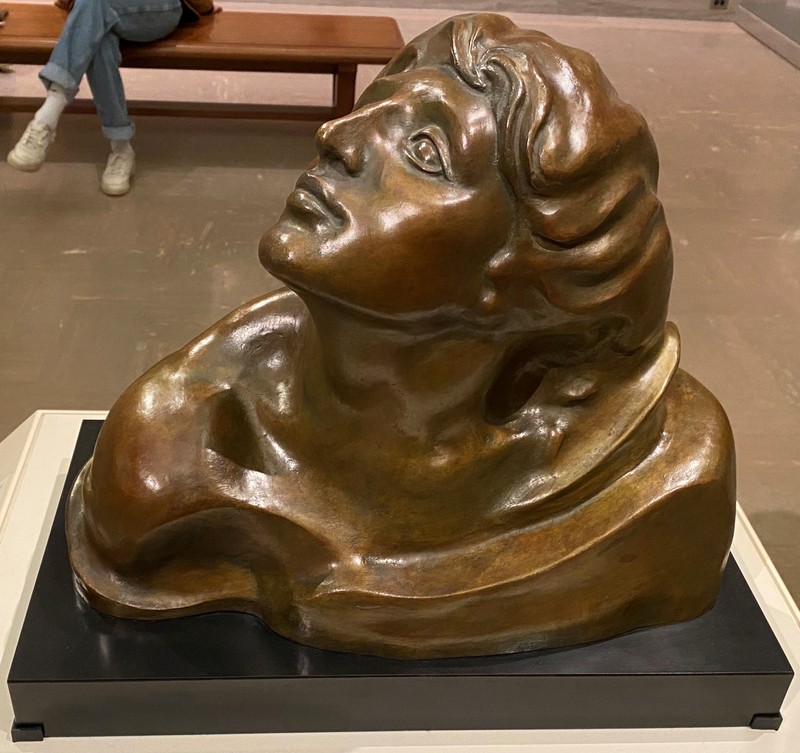
Portrait of the Artist's Sister (Mildred) (1913)
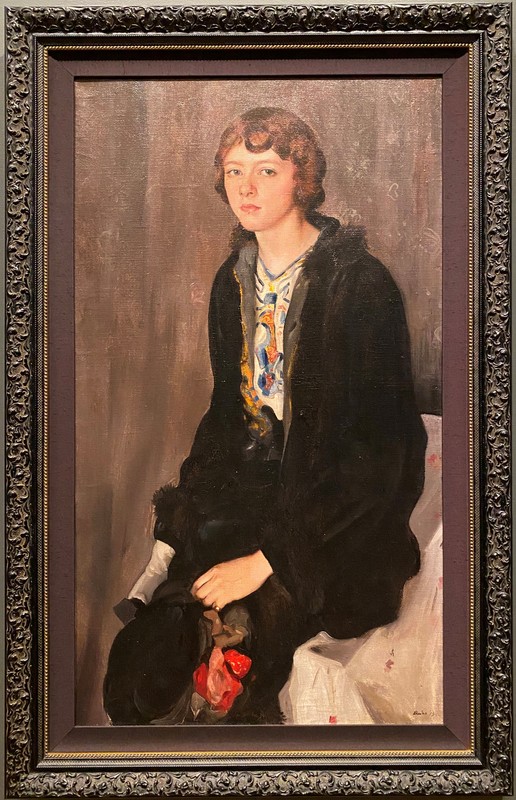
Backstory and Context
Text-to-speech Audio
Thomas Hart Benton donated some of his works to the Nelson-Atkins Museum of Art in 1975. Art collectors have sold or lent other pieces to the museum. Highlighting art by local artists helps the museum connect with its community. Displaying some of Benton’s best creations allows the museum to show that Kansas City is as much a part of the art world as New York and Paris are. Benton’s involvement in the American Regionalism movement and depictions of Black people put the artist at the center of still relevant conversations.
The Benton Farm (1973) shows the daily activities of rural life. A man milks a cow next to a barn while his barefoot children play on the dirt road. Grant Wood, the artist behind American Gothic, coined the term Regionalism in 1935. The movement opposed the abstract modernism that Benton had encountered in New York and Paris. Artists focused on scenes of rural Midwestern life and labor. Across various styles, the diverse works were realist, and no abstract elements distorted the images. Benton’s painting shows an average if idealized sunny day despite not being photorealistic. By the time he returned to Kansas City in 1935, Benton had dedicated himself to Regionalism and its subjects.
In the late 1930s, Benton caused controversy with his paintings of nude women. Persephone (1938-39) is a modern Midwestern play on the classic Greek myth. The elderly Hades waits to kidnap the young goddess as she lies naked by a stream. Putting aside the explicit content, viewers can see the painting is beautiful. The plants are remarkably detailed, and the woman’s skin looks almost lifelike. The huge work, roughly six feet by four and a half feet, towers over the visitor. The museum displays the miniature Persephone (study) to the right of the finished product. Benton used sketches, smaller paintings, live models, and sculpted figures to plan his pieces. This meticulous work was especially helpful for his murals. Benton achieved his masterpieces through careful design, creating a more polished finish than many modernist artists could achieve.
Based on a scene from a visit to Louisiana, Crapshooters (c. 1928) depicts a boat crew playing a dice game during their time onshore. This painting shows Benton’s personal style. Long, flowing lines make up the men’s bodies and exaggerate the hands, feet, and faces. The figures almost look three-dimensional. Benton applied these elements to both white and Black subjects. Because he was trying to create a national style with instantly recognizable “characters,” Benton had a “reliance on, and hence perpetuation of, popular racial, ethnic, and sexual stereotypes.”[1] He was not making fun of his subjects. Benton hated Southern racism. However, he was friends with extremely racist people and did not listen to the Black people who told him his work was insulting. Benton often stated his objectifying and derogatory opinions of everyone from women to gay people. Even if he was not violently bigoted, these biases often came out in his paintings.
Benton’s paintings on display at the Nelson-Atkins demonstrate his skills and stylistic tendencies. Nothing in his works was accidental or out of place. He was a capable artist who took his craft seriously. However, his legacy of racial insensitivity and caricature means that the museum cannot expect the paintings to speak for themselves. Anyone studying Benton must consider every intention behind his work, conscious or not.
Sources
- Crapshooters.
Adams, Henry. Thomas Hart Benton: An American Original. New York. Alfred A. Knopf, 1989.
The Benton Farm, The Nelson-Atkins Museum of Art. Accessed May 10th 2022. https://art.nelson-atkins.org/objects/67091/the-benton-farm?ctx=aaeab953-268e-47e1-9f05-2bbcf125fdc0&idx=0
Crapshooters, The Nelson-Atkins Museum of Art. Accessed May 10th 2022. https://art.nelson-atkins.org/objects/19952/crapshooters?ctx=5bab5371-29c1-40bb-b200-c92306d0b2e4&idx=2.
Persephone, The Nelson-Atkins Museum of Art. Accessed May 10th 2022. https://art.nelson-atkins.org/objects/27583/persephone?ctx=aaeab953-268e-47e1-9f05-2bbcf125fdc0&idx=4.
Persephone (study), The Nelson-Atkins Museum of Art. Accessed May 10th 2022. https://art.nelson-atkins.org/objects/27583/persephone?ctx=aaeab953-268e-47e1-9f05-2bbcf125fdc0&idx=4.
Wolff, Justin. Thomas Hart Benton: A Life. New York. Farrar, Straus and Giroux, 2012.
Emily Van Cleave
Emily Van Cleave
Emily Van Cleave
Emily Van Cleave
Emily Van Cleave
Emily Van Cleave
Emily Van Cleave
